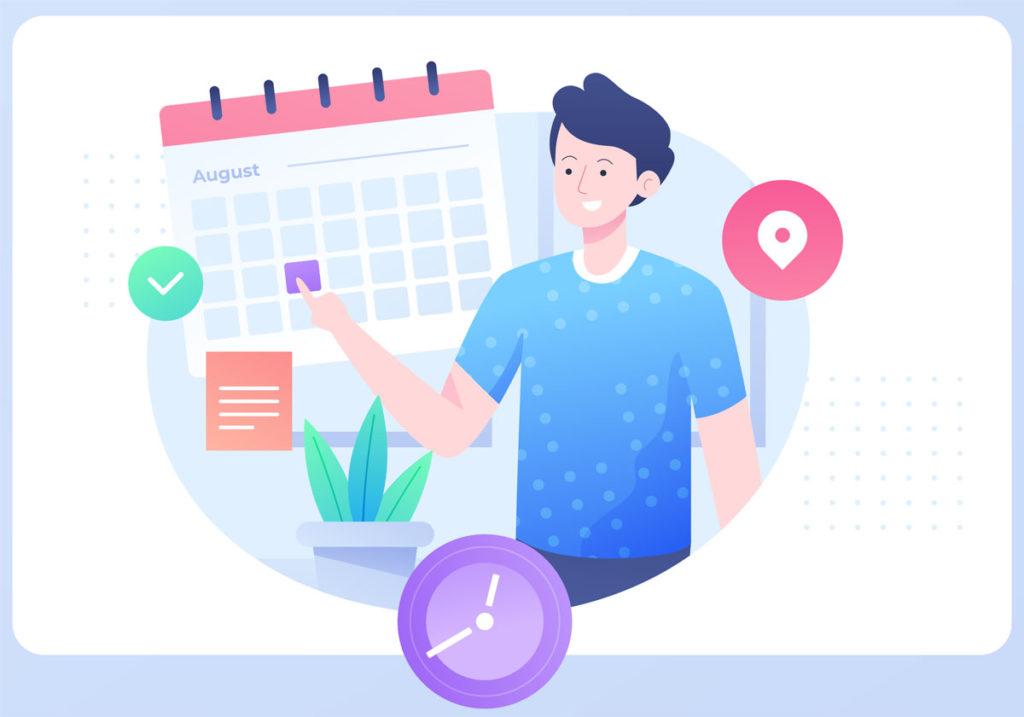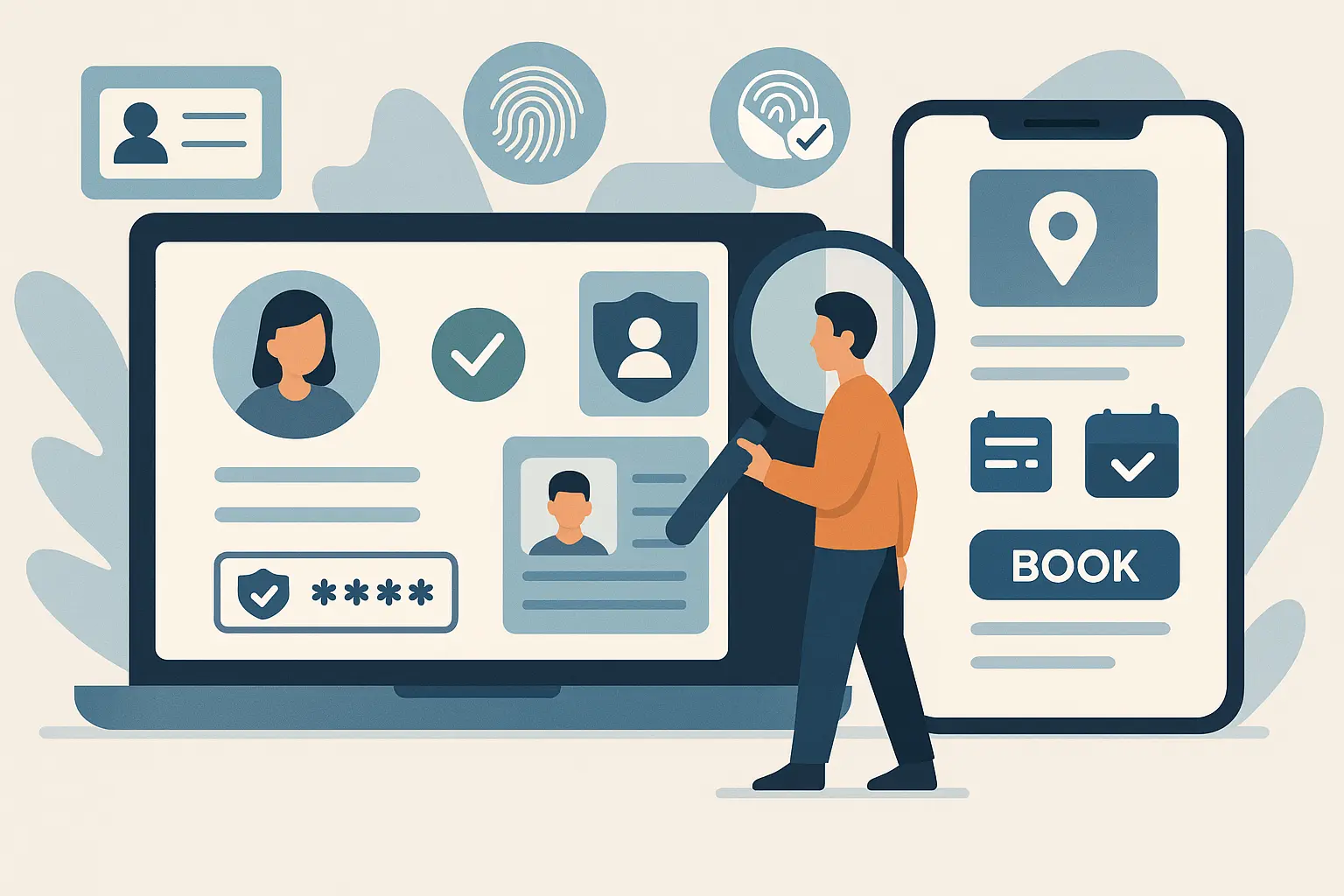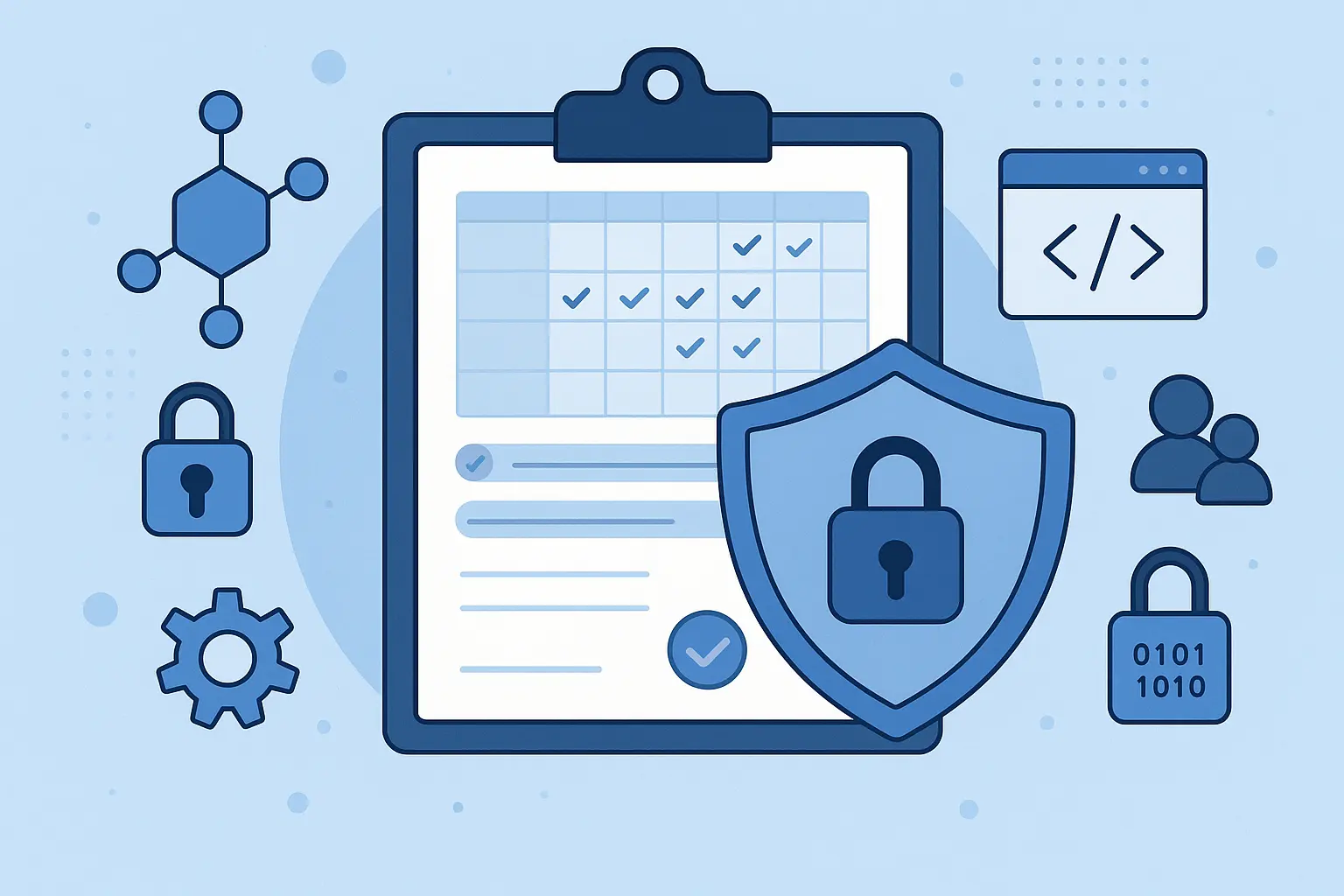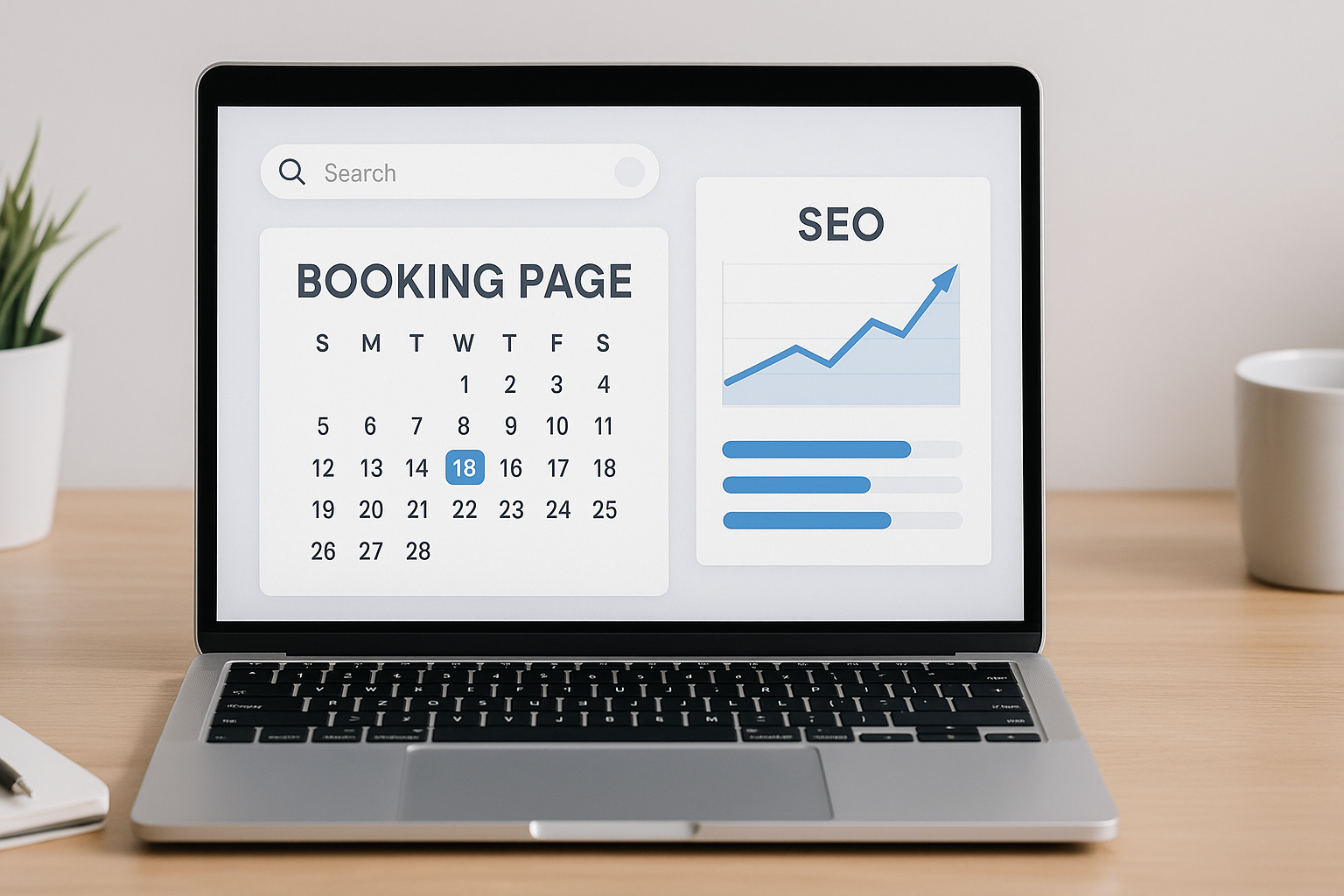Efficient appointment scheduling is the backbone of any successful business. But, far too often, businesses struggle with the complexities of managing appointments effectively, leading to frustrated clients and missed opportunities.
In a world where customers will pay for convenience, appointment scheduling is not just a luxury but a necessity. Research shows that in certain cases, local businesses that added online booking systems to their website increased revenue by up to 120%
However, you will not achieve these revenue levels by implementing just any appointment scheduling solution.
As you will see in this article, to elevate your appointment schedule for great customer experience, you must go beyond just having an online booking service. While a great system is crucial, you must also understand your client’s needs, optimize your scheduling process, and even leverage technology to streamline the entire experience. Dive right in!
5 Strategies To Increase Appointment Scheduling Experience
Gone are the days of tedious phone calls and endless back-and-forth emails to schedule appointments. It’s time to embrace innovation and optimize your scheduling process for maximum convenience and satisfaction. Let’s dive into the five game-changing strategies:
1. Streamline Booking Process
Streamlining the booking process is all about simplifying and optimizing every step involved in scheduling an appointment, from start to finish. You eliminate unnecessary steps and minimize friction at every touchpoint.
So how do you achieve this?
Start by investing in an intuitive online booking system with mobile accessibility. Then integrate calendar features to view real-time availability and use clear CTA buttons on your website or booking platform to help guide customers through the booking process.
You can also implement automated appointment confirmation emails or messages to instantly confirm bookings. The messages should also provide customers with all the necessary appointment details. Some of the key details include the time of booking, appointment type, day, appointment time, location, and video conferencing app link for online meetings.
This eliminates uncertainty and lots of follow-up messages after your clients book appointments. Check out the example below.
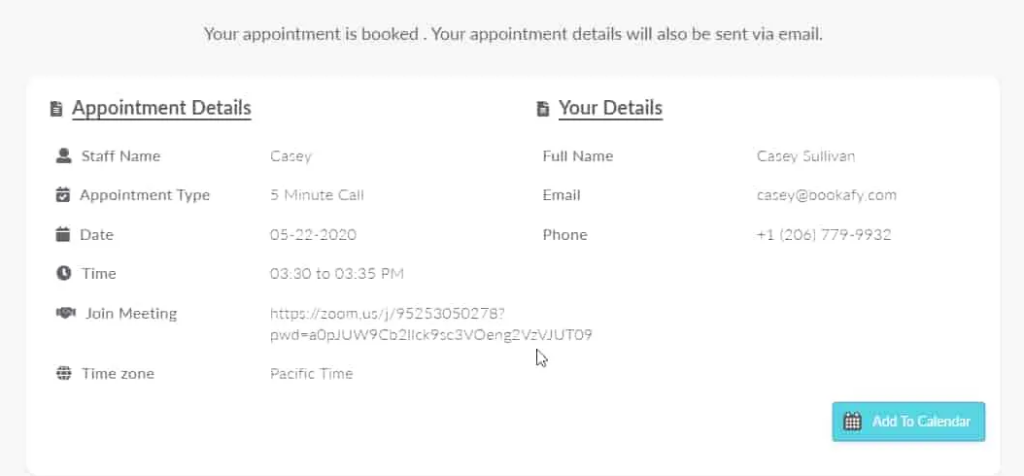
Keep the form fields simple and concise, asking only for essential information such as name, contact details, and reason for the appointment. This will help customers go through the appointment scheduling process faster, which will then boost the number of appointments you’ll receive.
To help streamline your booking process even further, include tutorial resources to help clients comfortably use your scheduling platform. For instance, you can record a video tutorial on how to book an appointment, which you can create in minutes with a free online screen recorder.
Additionally, include instant payment options that allow customers to pay for their appointments upfront.

An online appointment scheduling software like Bookify, as shown above, allows you to connect your account with Stripe or Authorize.net to make the payment process easier. As a result, you reduce administrative tasks and ensure a seamless experience for both parties.
2. Personalized Scheduling Experience
A personalized experience makes your potential customers feel valued, rather than just another appointment slot.
To easily personalize your appointment schedule for great customer experience, start by creating client profiles that capture relevant customer information. The information can include appointment history, preferred services, and contact details.
Then use the customer data to provide personalized recommendations for services or appointments based on their past behavior or interests. For example, if a customer books massages regularly, offer them special promotions or reminders for upcoming appointments.
Besides that, allow customers to make special requests or notes when scheduling appointments. Whether it’s a specific stylist or therapist, special accommodations, or dietary preferences for appointments involving food or beverages. Accommodating these requests will show that you value their individual preferences, which ultimately encourages more appointments.
Additionally, allow customers to specify their preferred appointment time slots. Doing this demonstrates you value their satisfaction. As a result, it will encourage more customers to book appointments.
3. Automated Reminders
Automated reminders enhance the appointment scheduling experience by reducing no-shows and ensuring that customers are well-prepared for their appointments.
Schedule automated reminders to be sent to customers well in advance of their appointments. So leverage technology like email or SMS notifications to send your customers timely reminders.
The automatic reminders are typically sent 24 to 48 hours before the appointment. This ensures that customers have ample time to prepare and can make any necessary adjustments to their schedule if needed. Here’s a great example of an automated reminder email.

You can broaden your reach by using a multichannel approach–where you send automated reminders through various platforms such as email, SMS, or mobile app notifications. Doing this will accommodate varying customer preferences, ensuring all your customers receive and see the reminders.
Check out this SMS patient appointment reminder.

The structure of the reminder messages will of course vary based on the channel. For instance, unlike an SMS message, an email reminder requires a subject line. It also has more length capacity. Therefore, you’ll have to craft different versions for your SMS and email reminders.
However, you don’t have to waste too much time doing so. You can easily save time by creating personalized reminders for each channel in minutes with the help of a great generative AI platform like Writer. Check out how easy the tool makes it to generate email subject lines.

Besides that, ensure you incorporate interactive features such as one-click confirmation or rescheduling options directly within the reminder message. This simplifies the process for customers and encourages immediate action, reducing the likelihood of missed client appointments.
In addition to pre-appointment reminders, consider sending follow-up reminders after the appointment to gather feedback or provide post-appointment instructions. These reminders will show your continued engagement and reinforce your value for customer satisfaction.
4. Data Collection For Customer Feedback
By actively soliciting and analyzing customer feedback, you gain valuable insights into what’s working well and where there’s room for improvement.
To collect data efficiently implement various structured feedback channels such as post-appointment email surveys, in-app feedback forms, and online review platforms. These channels allow businesses to gather specific feedback on the scheduling process, appointment experience, customer service, and overall customer satisfaction. You can also use a web crawler to gather customer feedback from other online sources like social media and review sites, giving you a broader understanding of customer sentiment.
Here’s a great customer survey example.

However, ensure you consider the timing and frequency of feedback requests to maximize participation and relevance. For instance, send surveys or request reviews shortly after appointments to capture the customer’s experience while it’s still fresh in their mind. Also, avoid fatiguing customers with excessive requests.
After collecting the data, analyze it to identify trends, common issues, and areas for improvement. Then, use this information to implement targeted improvements and refine your booking process.
5. Flexibility In Appointment Booking
The other key strategy to elevate your appointment schedule for great customer experience is ensuring it is flexible to accommodate diverse customer needs.
First, provide customers with various channels for booking appointments, including online platforms, phone calls, and in-person bookings. Offering multiple options ensures that customers can choose the method that best suits their preferences and convenience.
Also, ensure your appointment booking platform is available 24/7. This enables clients to schedule appointments beyond traditional business hours, catering to individuals with busy schedules or those in different time zones.
Additionally, implement flexible cancellation and rescheduling policies that accommodate unforeseen circumstances or changes in plans. Flexible policies demonstrate empathy toward customers’ situations which enhances customer experience and ultimately fosters customer loyalty.
Conclusion
Optimizing your appointment schedule to ensure positive customer experience is not just about efficiency. It’s about creating meaningful interactions that prioritize customer satisfaction and convenience.
This article has discussed five key strategies you can implement to effectively optimize your appointment schedule for great customer experience. They include streamlining the booking process, personalizing the schedule experience, sending automated reminders, collecting customer feedback, and embracing flexibility.
With these strategies, you can elevate your scheduling game, which will keep your customers happy and keep your business thriving. So why wait? Start implementing these strategies today!









